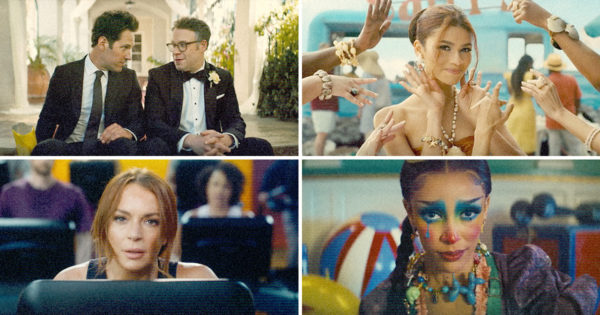The Super Bowl has become a high stakes wager for brands looking to market during a premier sporting event.
In exchange for Fox’s 2023 asking price of $7 million per 30-second slot, advertisers can hit an audience that averages more than 100 million people. Last year’s Super Bowl drew an estimated 208 million viewers.
With so much invested in Super Bowl participation, brands need to make a splash to remain memorable with viewers. One way of accomplishing that has been the use of celebrities.
Nearly two out of three viewers (64%) believe people are more likely to buy a product when it is endorsed by a celebrity according to “The Super Poll,” a survey conducted in October 2022 among a representative sample of over 1,000 people across geographies, genders, ages and ethnicities by Omnicom agency The Marketing Arm. That figure rises to 70% among Gen Z participants.
“[The Super Bowl] has become a cultural touchpoint,” The Marketing Arm svp of celebrity and influencer Megan McMahon told Adweek. “It’s a lot being thrown at consumers and the power of celebrity really helps brands break through. If you’re going to have that moment, it’s a great way to have recognition and break through the clutter.”
Professor of marketing at Villanova University Charles R. Taylor says over the past 25 years, about a third of the ads would have celebrities. Recently, there’s been an uptick over the last few years, well over 50% and closer to two-thirds of Super Bowl ads have celebrities featured in them. Brands aren’t just stopping at one celebrity either. In recent years, the number of Super Bowl ads with multiple celebrities has increased.
“A big part of what’s behind [the rise in celebrity-filled ads] is the Super Bowl has this big event atmosphere, and people are watching together, they’re watching a lot of ads,” Taylor added. “It’s so important for the ad to stand out and be remembered in that context. A celebrity is a really good device to get attention for the ad.”
Influencing the masses
Though celebrities are a clear advertising option, social media influencers still are a mixed result. Only 40% of respondents said they would be interested in seeing social media influencers in Big Game ads, though that number rises to 67% among participants under 25 as well as 67% for African Americans and 58% for Hispanics.
Brands have begun working influencers into their Super Bowl plans, but rarely do they take centerstage. For instance, TikTok star Charli D’Amelio appeared with 18 other celebrities in Sabra’s 2020 ad.
“It’s that instant recognizability,” McMahon said. “A lot of times you have 30 seconds, 45 seconds and you have to make sure multiple celebrities get into an ad. The recognizability with traditional celebrities is still far and above what people are looking for.”
McMahon said some clients have found success making effective campaigns that use both a more traditional celebrity in the ad, but then also extensions of the ad with digital content featuring other celebrities or influencers.
In Planet Fitness’ Super Bowl spot earlier this year, Lindsay Lohan was the featured celebrity but TikTok creator @AngryReactionsGuy appeared in the ad as a background character.
Viewers are watching for the experience
52% of respondents said they watch the Super Bowl for the experience over the commercials or the game specifically. As many viewers treat the event like a holiday, it’s abou enjoying the show with family and friends while being entertained.
The Super Poll also looked at what viewers found to be their favorite ads from last year. The top five ads from the open-ended question were Doritos, Budweiser, Pepsi (which didn’t have a spot in the game, but sponsored the halftime show), Bud Light and Amazon.
All five ads were from brands that have had a consistent marketing presence at the Super Bowl, leading to their presence in the game to be more memorable.
Impact of economic uncertainty
During last year’s Super Bowl, crypto brands such as Coinbase, FTX and Crypto.com ran ads. With the recent bankruptcy news surrounding FTX and the economic downturn for the cryptocurrency market, brands in this category will likely shy away from advertising in the 2023 Super Bowl, according to Taylor.
The overall economic downturn could have an impact on the themes of Super Bowl commercials.
Taylor said brands are already focusing on nostalgia-based marketing for the holidays such as Budweiser releasing holiday-themed beer and sweaters featuring the Clydesdales.
“Because of the tough economy and high inflation, I think we’re going to see a good bit of nostalgia this year,” he said. “We’re going to see a lot of focus this year on good feelings. Brands are well advised to focus on basic and happy things.”


No Comments Yet